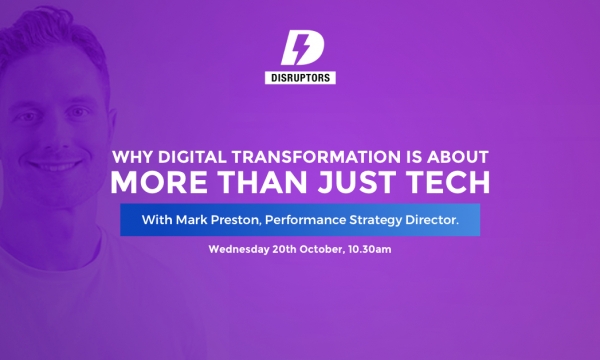
Every single digital innovation has the potential to significantly change consumer behaviour. Trip Advisor has empowered anyone to become a hotel and restaurant critic, social media has changed the face of customer service and brands such as Netflix have changed the concept of content delivery to such an extent that it has actually resulted in the closure of long-established business models.
Whatever the change, the survival of any established brand lies in their ability and agility to respond to that change. Consumers are incredibly quick to embrace new developments, and established organisations need to match that pace.
An Econsultancy report in June 2015 found that “keeping up with marketing technology” was a significant problem for brand marketers. Similarly, the growth of so many channels and platforms had meant that “developing a single customer view” was the biggest headache facing marketers today, ahead of IT bottlenecks and a lack of testing time.
These challenges highlight major problems with agility within large organisations, particularly those with large staff headcounts, multiple offices across different time zones, multiple stakeholders and multiple external agencies.
Our latest whitepaper, Creating a Digital Centre of Excellence, discussed how this lack of agility is rooted in a number of common business cultural barriers. By overcoming these, organisations can overcome this inertia and tackle these challenges head on.
“It’s too difficult to do”

Technical challenges can dramatically slow down transition within large organisations. This could be due to a combination of skills and resources, or due to the limitations of legacy system infrastructure.
The latter is still a very common challenge for organisations of all sizes. Many ecommerce platforms or content management systems (CMS) are not designed to be optimised for cutting edge digital marketing, and either adding content to these platforms, or modifying these platforms, can be an extremely complicated process.
Many organisations are now starting to invest heavily in updating these platforms but often, these challenges can be overcome by more creative solutions that don’t necessarily require such a large scale investment For example many organisations have created dedicated ‘bolt-on’ microsites that allow them to upload content and customer features quickly, independent of the legacy ecommerce CMS, and avoid the risk of lengthy technical development delays.
“There is nobody available to do it at the moment”

Digital now touches a number of organisation departments that previously did not have digital within their remit or, at the very least, had a much smaller role to play in the digital strategy.
But as digital becomes less of the remit of a single, siloed department, it creates a very acute set of challenges. Suddenly, multiple departments, from technical departments such as technical SEO, market research and development, through to creative departments such as branding, PR, social media and content, have to collaborate much more closely on digital projects.
However, those working within these departments are already likely to have extremely busy schedules, already filled with multiple responsibilities, and multiple targets. Therefore, any attempt to add to that workload with new digitally focused duties will potentially meet with resistance.
When skills shortages are thrown into the mix, then this becomes a significant headache.
Our whitepaper discusses a working model known as the ‘Digital Centre of Excellence’, which is an organisational model that is designed to improve an organisation’s digital agility, knowledge and skills so that they can react to changes in the digital industry and consumer trends.
The Digital Centre of Excellence model is one that is designed to specifically address this resource and skills shortage. A core component of this model is the introduction of a ‘Digital Guardian’ to the organisational structure, whose remit is to champion digital skills and strategy across the business operation.
“It can’t be done until the next release”

Google is an extremely agile and capricious organisation, which can and does apply significant changes at very short notice – or no notice at all.
This is often in contrast to many organisations that are looking to use Google as a key source of traffic. Whilst consumers, smaller competitors and Google move at an extremely fast past, large organisations are held back by a series of technical, stakeholder and sometimes legal bottlenecks.
This process is often tied into the challenges of old legacy ecommerce platforms, or they are implemented due to resource pressures. However, they can significantly hamper an organisations digital performance.
As with the technical challenges, the solution here often lies in deploying a solution that works around the existing technical development process. It isn’t sustainable to have a process where everything depends on a lengthy development schedule, so find a way to step around these IT bottlenecks.
Our work with a leading global brand in the travel and leisure sector presented this very challenge, where we were looking to upload large quantities of content, on a regular basis, to a website that had a very procedural and regimented updating schedule. We were able overcome this challenge by creating a new sub directory that was updated and controlled independently of the main ecommerce website. This simple and extremely cost-effective fix allowed use to execute our marketing strategy and achieve significant traffic and revenue growth for the client.
“We don’t see the value in doing this”

Making the business case for digital strategy is one of the biggest challenges for Marketing Directors within large organisations.
Convincing executive level colleagues to support a change in vision from the norm is understandably a part of the process in creating a digitally focused brand, but it is also one of the biggest causes of delays and, ultimately, poor digital performance.
The reality, however, is that this frame of mind is ultimately what has seen many organisations overtaken by their more agile competitors, and established business models rendered obsolete. You may not see value in a particular change, but there is a very strong chance that your target audiences do.
“That’s not how we do things around here”

Corporate inertia is what leads to a business to remain in a state of normality, instead of challenging existing processes, structures and visions to adapt to modern consumer habits.
This is often the result of a lack of digital skills within an organisation. As many brands are still led by individuals from traditional, non-digital backgrounds, it becomes natural to focus primarily on traditional channels, where the business and the people within it feel most comfortable.
This is another key area that the Digital Centre of Excellence model, and in particular the idea of Digital Guardians, addresses. It places an emphasis on championing and training digital skills in areas of an organisation where digital may be something of a weakness. This could be either at operational or at boardroom level.



